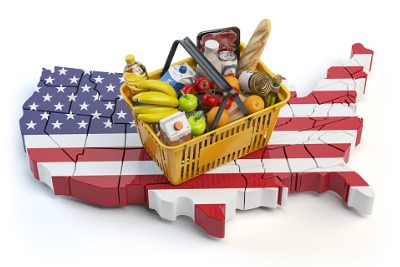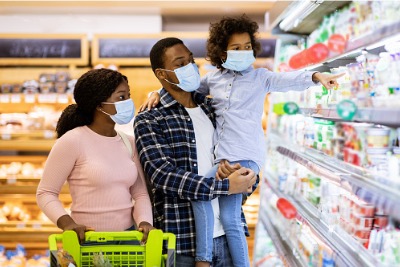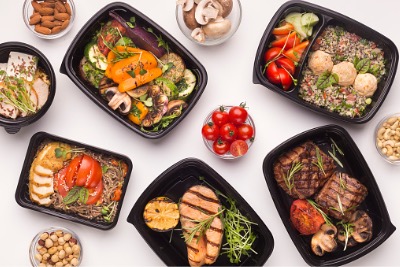
Food and Beverage Trends for 2022
The Covid-19 pandemic has had a monumental effect on the USA food and beverage industry and these trends will continue into 2022. It has both directly and indirectly altered food consumption norms. Food and beverage tastes and preferences as well as buying behavior amongst consumers have changed and changes are expected to be long-term. Many of the trends of 2020 and 2021 will continue into 2022 and beyond. These trends provide opportunities and challenges in the retail and food service sectors.

How Have Consumers Changed?
Changes in food consumption and purchasing have been a key area of concern for the industry. A recent Deloitte Study involving thousands of consumers found that:
- 42% of people are planning to cook more at home post pandemic than before the pandemic
- 29% of people are planning on buying more fresh food
- 26% of people plan to continue to work from home
- 20% will continue to order food for take-out and delivery
- 10% said that they will not stay in a hotel or use public transportation like they did pre-pandemic
- 12% said that they would not take flights, eat at restaurants and
- 16% will not attend events like they did pre pandemic

Adjusting to New Lifestyles
The reasons for the change in lifestyles and purchasing behaviors are many. In the second quarter of 2020, many people were sent home. Millions in the service sector were unemployed, older people retired, mothers (and some fathers) left their jobs to home school and those who were employed worked from home. Pandemic related anxiety led to more food consumption, gyms were closed, the home-bound moved less and many people reported issues with weight gain.
Sales of housewares like pots, pans, and utensils sky-rocketed. Cookbook sales increased by 132%. People learned to cook and had time to become better cooks. At the same time, online food purchasing increased and this growth is projected to continue into 2024.

Cooking at home is considered by many to be less expensive than eating out, so households with disposable income, who frequent restaurants, were spending less of their income on food.
The pandemic has prompted consumers to re-examine their food choices. People are also changing what they eat. According to a Whole Foods Study people are buying healthier, greener foods, less meat, higher quality meat and less alcohol. More and more, people are consuming food supplements. These trends are expected to continue in 2022.

Restaurants and Food Service
According to an academic study “Examining Food Purchase Behavior and Food Values During the COVID-19 Pandemic”, conducted by 6 universities in the USA, several factors affected food service sales. The pandemic effect was not uniform. It varied from state to state, and depended heavily on each state’s reaction to the pandemic. How restaurants did during the pandemic depended on many factors:
- The state the restaurant operated in. Some states did not shut down restaurants and as a result, decrease in revenues was small. For the restaurants in states that shut down, indoor dining decreased but that decrease was offset by take-out, delivery services and outdoor dining.
- Depending on the SES (socio-economic status) of the community, some people began working from home and disposable income did not change much. What changed was that there were no business lunches dinners or events. Weddings, conferences, meet-ups and even dating stopped. People began cooking at home, ordering meals, ordering groceries online.
- Food value and purchases were and still are driven by taste. Whether or not the food tasted good was the primary factor for purchasing choice during the pandemic. Food nutrition and price were weaker indicators of purchase behavior.
- Stockpiling was a short-lived trend during the pandemic.

Restaurants are adopting more technology, changing their layouts and changing their menus. This trend is expected to continue in 2022. Consumers are seeking more international and healthier foods. This trend is fueled by restaurants on social media, particularly TikTok, Instagram, YouTube dozens of food channels, local community pages, and online review sites.
Restaurants are becoming more efficient and profitable. According to Boston Consulting Group, restaurant delivery services jumped from 7% of orders, to 28% of orders and demand for delivery is expected to rise in 2022. Both restaurants and consumers have adapted to online ordering and delivery.

Halal Food and Beverage USA
There are many opportunities for the Halal food and beverage industry in 2022 and beyond. For new ventures in either retail or food service – there is no time like the present. Consumers are demanding healthier, greener, cleaner foods. In the food service sector, consumers are demanding international cuisine. Innovative forms of catering, new technology and new dining trends are emerging. Social media is a huge driver of demand for Halal cuisine. The Halal food service sector could benefit from more local exposure on social media outlets.
ISA certification helps companies in the food and beverage sector reach Halal consumers. Halal consumers look for Halal certification in retail and food-service.